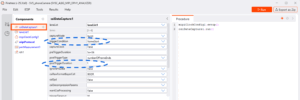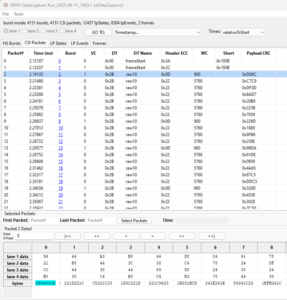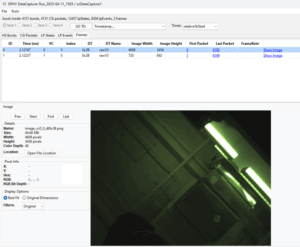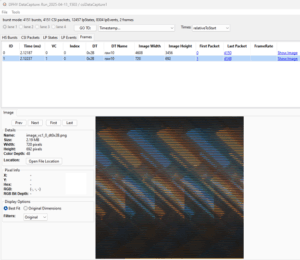
Technical Insights
What is the MIPI CSE Specification and How is it Related to MIPI CSI-2?
7 min

Non-intrusive active signal probing is a powerful technique that helps design engineers test, validate and debug a variety of new high-speed interfaces. Using multiple probes can often be messy and creates challenging test setups due to signal points located in inaccessible areas.
Introspect’s multi-conductor RSH2 Remote Sampling Head provides a simple, connectorized interface for easy attachment to parallel high-speed buses. This clean and user-friendly solution is simple to configure for a variety of applications.
In this article, we demonstrate how the RSH2 can be used to probe a live smartphone camera. Read on to see what was revealed while testing this procedure.
The hardware for this procedure involves an RSH2 connected to a smartphone through solder-down probe tips, as shown in Figure 1 below. The bus being probed is a D-PHY link carrying CSI-2 camera traffic. Four data lanes and one clock lane are used in the phone, and all of these lanes are probed simultaneously. Traffic within the phone is sensed/probed by the RSH2 after which it is routed into the SV5C-DPRXCPRX MIPI D-PHY and C-PHY Analyzer for processing and analysis.

Once the hardware setup is complete, capturing data with the SV5C-DPRXCPRX D-PHY Analyzer is straightforward thanks to the Pinetree software. The user must select the appropriate tool within the software to begin the capture. Here, we are probing the high-speed link between the phone’s camera and the applications processor. Data is being transferred in CSI-2 packets over the bus, so we select the csiDataCapture component to execute this capture. Our trigger condition is a frameStart and postTriggerDuration is set to capture one (1) complete frame.

Once the capture is complete, the results are neatly organized in the capture viewer of the software. Under the ‘CSI Packets’ tab, detailed information about the size, data, burst, and timings for each packet are summarized. For example, in the figure below, we can see that the data type for the first capture is a ‘frameStart’ and this is expected given the trigger condition specified.
We noticed an interesting observation in this panel, where some of the packets are being sent on Virtual Channel 0 (VC0) and some on Virtual Channel 1 (VC1). This suggests that two images are being transferred on the bus, instead of one!

To check this further, we can move the ‘Frames’ tab which neatly saves and displays the captured images from the phone. The viewer also displays detailed information about the image such as the data type, image resolution and frame rate.

We clearly see here that two images were in fact captured: one on VC0 and another on VC1! The first image is the output from the phone’s camera, which in this case was pointing towards the ceiling and some of the lab ventilation. We can take a look at the second image on VC1, which is shown below:

This image is smaller and appears to be a subset of the first image. So within the global ‘frame start’ and ‘frame end’ period of the main image that we’re capturing, the phone is also sending a separate image frame that seems to contain some auto-focusing information. Many modern smartphone cameras deploy computational tricks such as Phase Detection Auto-Focus (PDAF) to produce professional looking images. This phone appears to be using some of these in-sensor processing techniques which reveals the efficient design configuration of the device.
Minimized Loading: Especially useful for low-voltage applications such as MIPI or Embedded DisplayPort
Low Noise: Enables high-reliability protocol analysis or bit error rate testing
Multiple Connection Modes: Permanent or temporary attachment to DUTs
Are you eager to see how this all works in real-time? In this video, we take you through the whole procedure to probe a smartphone camera with the RSH2.
Finally, we recently hosted a webinar which featured the RSH2 and probed DDR and LPDDR signals. A must-watch for anyone interested in next-gen memory interfaces! Watch the recording here.
As you can see, the RSH2 Remote Sampling Head is one incredibly flexible oscilloscope probing solution, with the capability of uncovering unexpected data. From large smartphone OEMs using the RSH2 for quality screening on display interfaces in production, to camera labs at major SOC makers needing to verify interoperability with different image sensor vendors, the RSH2 is an indispensable tool for probing signals.
Not only is the RSH2 compatible with our selection of protocol analyzers & generators, it is also compatible with any 50 Ohm oscilloscope! So, you can add it to nearly any existing test and measurement setup for a super clean and efficient bench area.
Have a question about the RSH2? Drop us a line at info@introspect.ca.
